Abstract
Fluctuating asymmetry, which represents small random deviations from otherwise bilateral symmetry, is a measure of the phenotypic quality of individuals indicating the ability of controlled development under given environmental and genetic conditions. I tested whether floral symmetry reliably reflects phenotypic quality measured in terms of pollinator rewards and whether pollinators respond to floral symmetry in a series of observations and experiments on Epilobium angustifolium (Onagraceae). Lower petal asymmetry was negatively related to mean lower petal length, whereas asymmetry in leaf width was positively related to mean leaf width. Flowers visited by bumblebees were larger and more symmetrical than the nearest neighboring flower. This relationship between pollinator preference for large and symmetrical flowers was demonstrated to be causal in experiments in which the lower petals were manipulated symmetrically or asymmetrically. Nectar production was larger in symmetrical flowers, and this may explain the bumblebee preference for flower symmetry. Floral symmetry therefore reliably reflects nectar production and hence enhances pollen transport. Extensive embryo abortion has been documented in E. angustifolium and other outcrossing plant species. Floral fluctuating asymmetry, which reflects general developmental homeostasis, may explain such developmental selection in these plants.
Full text
PDF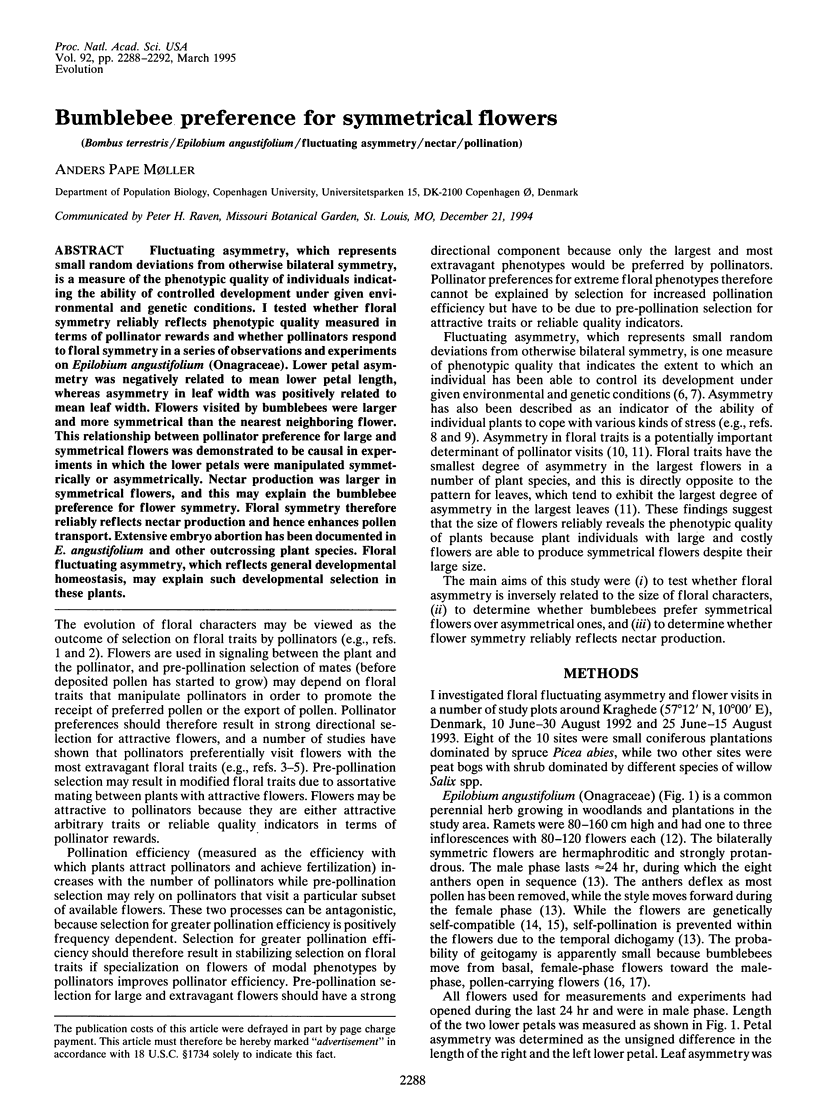
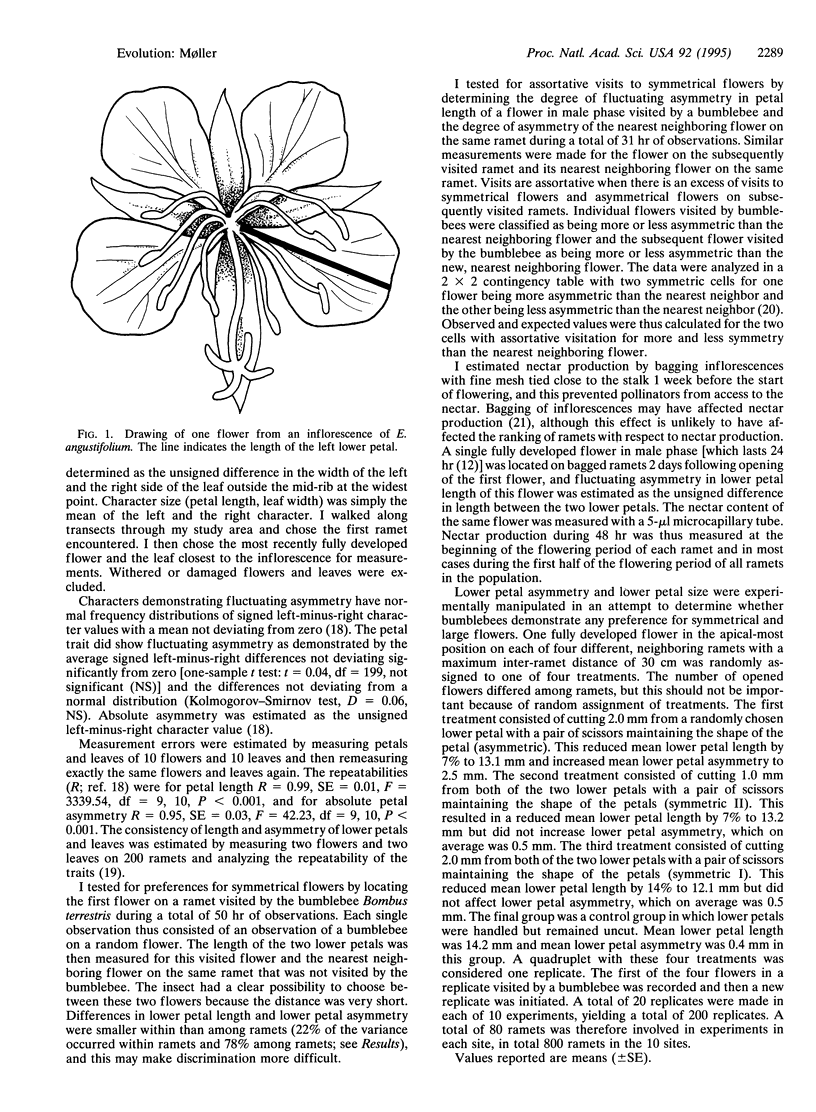
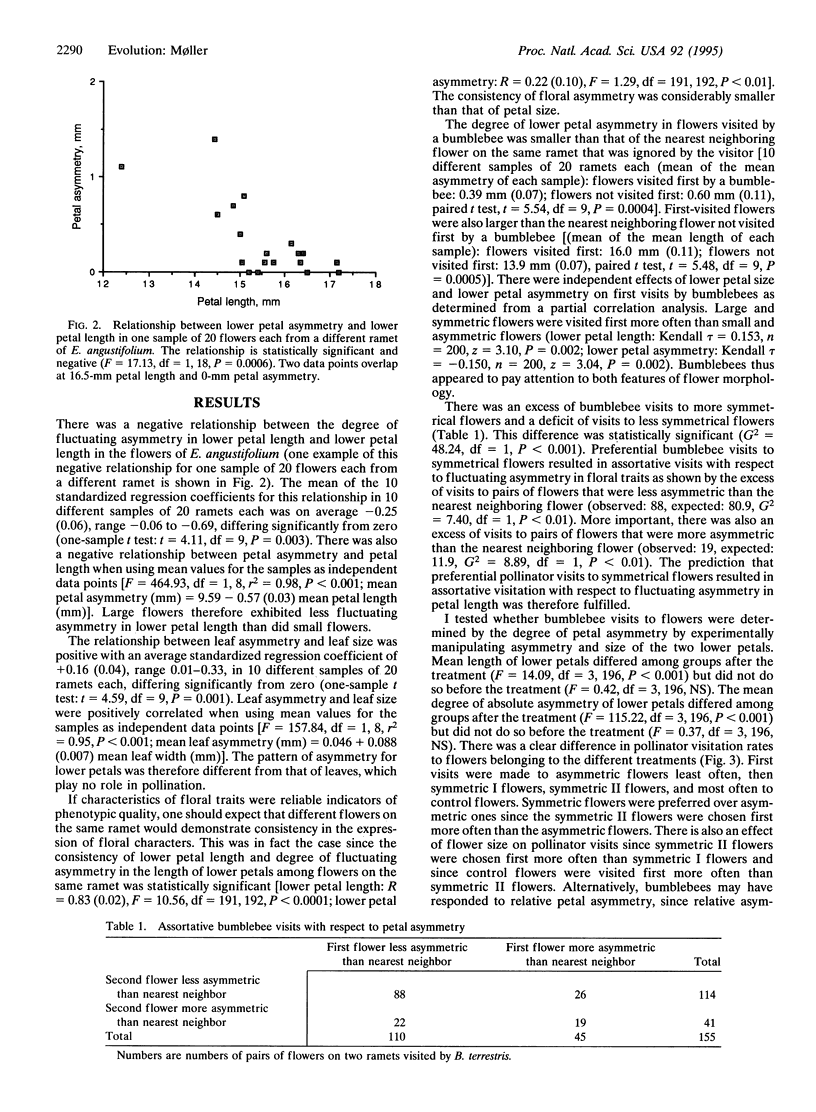
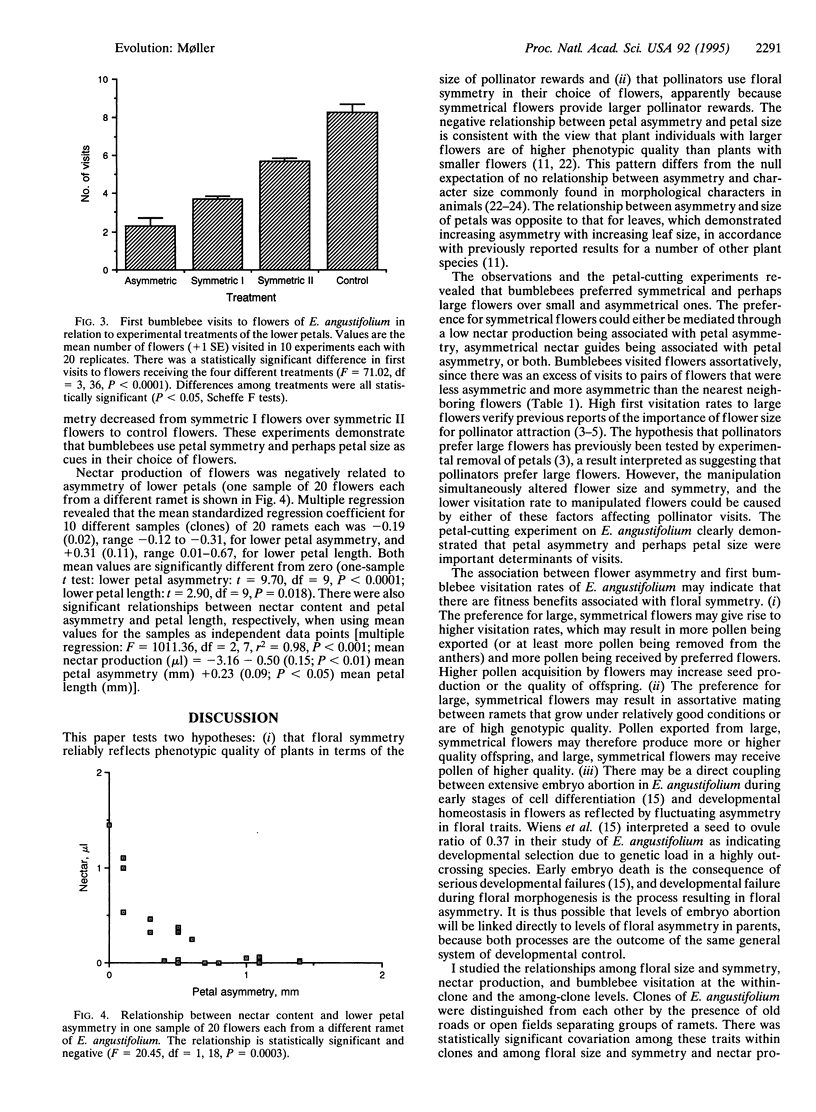
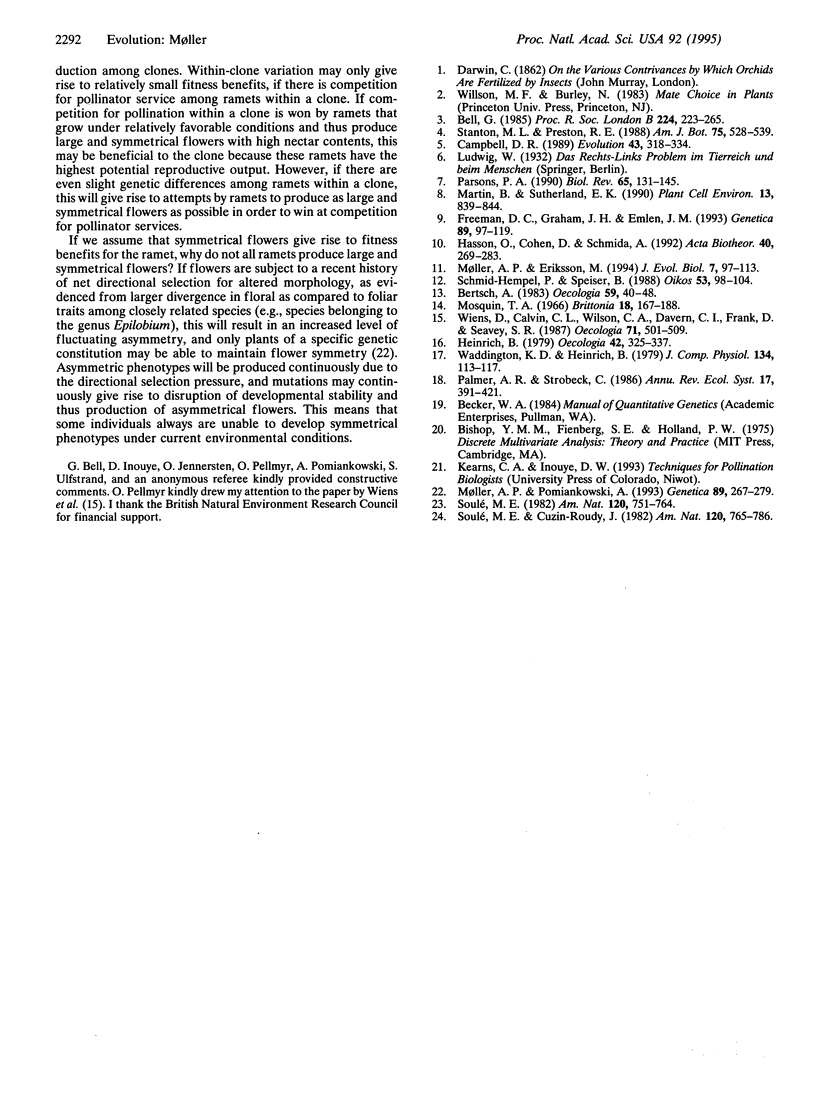
Selected References
These references are in PubMed. This may not be the complete list of references from this article.
- Parsons P. A. Fluctuating asymmetry: an epigenetic measure of stress. Biol Rev Camb Philos Soc. 1990 May;65(2):131–145. doi: 10.1111/j.1469-185x.1990.tb01186.x. [DOI] [PubMed] [Google Scholar]


